Theatre of the Neglected
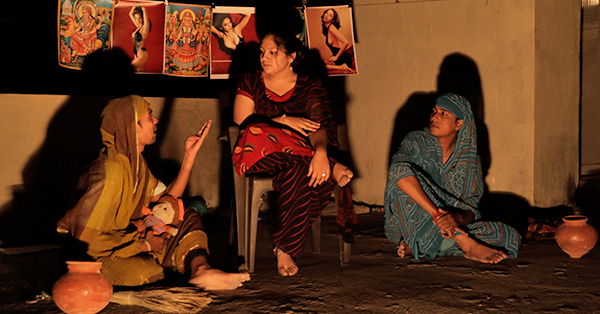
 বিক্রম আয়েঙ্গার (Vikram Iyengar) (July 3, 2021)
বিক্রম আয়েঙ্গার (Vikram Iyengar) (July 3, 2021)On 10 February 1998, 28-year-old toymaker Budhan Sabar and his wife Shyamoli Sabar were on their way to the latter’s uncle’s home in Burrabazar in Purulia district, West Bengal. As they stopped for a paan, Budhan was taken into custody by Ashoke Roy, Office in Charge of the Burrabazar Police Station in connection with a bus robbery that had occurred almost a year ago on the Purulia-Burrabazar road. Over the next few days, Budhan was severely beaten and tortured in custody, denied food and water, and finally found hanging in his cell on 17 February 1998 with what the police claimed was his own gamcha – therefore a case of suicide. But Budhan apparently did not have a gamcha with him when he was arrested and taken into custody. On the basis of this and several serious discrepancies and gaps in official records and statements, alongside casual and callous flouting of arrest and jail procedures (including the post-mortem) by the authorities in question, Justice Ruma Pal of the Calcutta High Court delivered a clear and categorical interim judgement in the Paschim Banga Kheria Sabar Kalyan Samity versus the State of West Bengal and others case in July 1998. The judgement stated that there was little doubt that this was a case of police brutality and custodial death that should be fully investigated by the CBI to bring the guilty to book; that the police and jail personnel concerned face departmental proceedings and be transferred from Purulia; and that Budhan’s next of kin – his wife, parents and son – be compensated by the State of West Bengal.
This was a landmark judgment that called out the systemic violence and oppression meted out to DNTs – Denotified Tribal communities – by authorities across India. The Kheria-Sabars are one of three such tribes in West Bengal that carry the stigma of ‘born criminals’ – a label that gained legal sanction after the British passed the abominable Criminal Tribes Act in 1871. Under this act, about 237 nomadic castes and tribes across India were branded as criminals. And while India became independent in 1947, it took the government a full five years to ‘denotify’ them on 31 August 1952. However, rather than completely throw out the orientalist and colonial idea of hereditary criminal tribes, the Indian Government replaced the 1971 Act with the Habitual Offenders Act, 1952. So the stigma remains – a stigma that is socially and legally sanctioned through generations of prejudice. However, the Ruma Pal judgement was a rallying point for all these communities and the media, and tore apart what had so far been (and unfortunately continues to be) accepted and arrogant police behaviour.
In May 1998, author and activist Mahasweta Devi – who worked closely with tribal issues and was personally involved in the Budhan Sabar case – visited Chharanagar in Ahmedabad with Dr. Ganesh Devy, another well-known tribal activist. They had been researching the levels of education among DNTs towards galvanising the DNT movement, and had identified the Chharas and the Banjaras as the most educated. However, both activists were detained at the local police chowki for over two hours. The police in Ahmedabad still see the Chhara community as troublemakers and Chharanagar as a den of vice: they could not quite conceive of why two apparently respectable individuals would want to go there and meet people!
Indeed, from the time we arrived in Ahmedabad (and this is April 2021), we faced quizzically raised eyebrows whenever we mentioned that a visit to Chharanagar was on our agenda. That’s where people go to buy liquor, we were told. Chharanagar in east Ahmedabad is – for all practical purposes – a ghetto, quite a distance from the showcase bit of Ahmedabad ‘megacity’. When we did visit, we found a rough urban area reminiscent of unplanned small towns – parts of it little more than an urban slum. But this was surrounded by quite an upmarket and rich Sindhi neighbourhood, identified by large mansions with high walls to shut out their disreputable neighbours. Aatish and Chetna – both Chharas – pointed out this very obvious division as they took us on a tour through Chharanagar. The neighbourhood has also become home to many migrant workers. They don’t easily find places to live, but living here has also tainted them with the stigma associated with the area.
As we walk through, we also notice some community shrines to Kali – not something that is common in the rest of Ahmedabad – and several smaller shrines at the entrance to individual houses. These are ‘khambi’, Aatish tells us, dedicated to family and clan ancestors. These remnants of ancestor and nature worship prove that Chharas have their own tribal religions, though now they have been co-opted into Hinduism. However, that sits quite uneasily in the narrow Hindu identity being peddled in Gujarat. Chhara wedding and funeral rituals are never complete without serving alcohol to their ancestors, for example. And beef is a major delicacy specially during Holi, which is still celebrated Chhara style with spit-cooked meat and flowing spirits. All this in Gujarat, where cow slaughter is banned and prohibition is in force!
These remnants of ancestor and nature worship prove that Chharas have their own tribal religions, though now they have been co-opted into Hinduism. However, that sits quite uneasily in the narrow Hindu identity being peddled in Gujarat. Chhara wedding and funeral rituals are never complete without serving alcohol to their ancestors, for example. And beef is a major delicacy specially during Holi, which is still celebrated Chhara style with spit-cooked meat and flowing spirits. All this in Gujarat, where cow slaughter is banned and prohibition is in force!
We ended our tour at a large open site dotted with ramshackle buildings just outside Chharanagar. This is the Beggars Colony under the State Social Defence Department – our guides are surprised when we mention that we’ve never heard of any such department in our state. The colony is guarded by a posse of policemen, and it takes some sweet-talking to allow us to walk in – though we have to leave our phones and cameras at the gate. Perhaps we are a threat to whatever it is they are defending. The obviously abandoned buildings in front of this – also in a huge ground – used to be a school that Aatish and Chetna attended when they were children. The entire community could access the large playground – a boon, since there is no open public space within Chharanagar. But access is disallowed now – the whole area looks and feels forsaken and forgotten. Right beside this is a police chowki that is able to observe Chharanagar from a slightly higher vantage point – the same police chowki where Mahasweta Devi and Dr. Ganesh Devy had to spend a couple of hours before they were able to visit Chharanagar in May 1998.

The entrance to the community library at Chharanagar, Ahmedabad 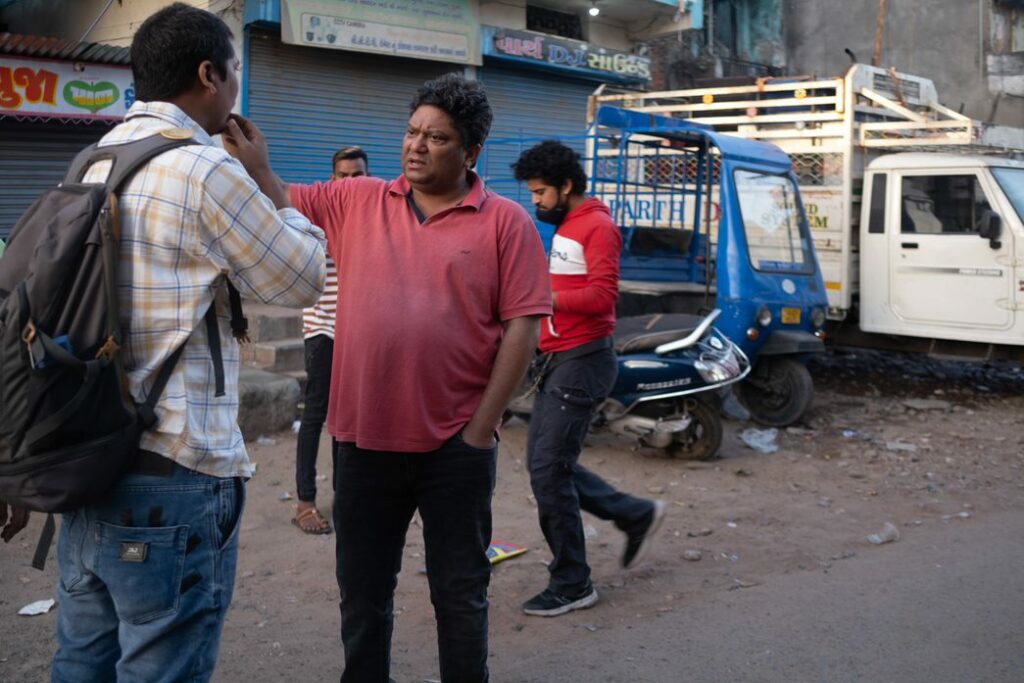
Dakxin Bajrange at Chharanagar, Ahmedabad One of the community members that Mahasweta Devi met when finally allowed to enter Chharanagar, was Dakxin Bajrange. When asked what the community needed, he mentioned a library. There is 100% primary education in Chharanagar, but the stigma severely impacts the Chharas access to knowledge of all kinds. Dakxin himself was not aware of the extent of this reputation and discrimination until he attended college outside Chharanagar. A library would help bring the world to Chharanagar, but would also provide an actual space for the community to gather, organise and advocate for themselves. Mahasweta Devi donated most of the books from her provident fund, and this library – that first began in a section of a shop and now has a whole floor to itself – has become the socio-political and transformative community heart of the Chharanagar.
The library is also where Budhan Theatre is based. Soon after Justice Ruma Pal’s judgement in July 1998, Dakxin began working on a playscript based on it, even though he had no formal training in playwrighting or directing. Budhan – the street performance that came out of it – premiered on 31 August 1998 (Denotification Day). It received country-wide and world-wide attention, and was the first positive media coverage of Chharanagar. Today, the script is archived at Cambridge University. Thus was born Budhan Theatre, and 31 August is now considered the DNT Independence Day. That first meeting with Mahasweta Devi, and that first play provided the impetus for all that Budhan has done since, galvanizing their own community using theatre as a tool for advocacy and communication, and reaching out to other DNT and marginalised communities across the country to build home-grown leadership.
But why theatre, I asked Dakxin. In response, he gives me a vibrant picture of the socio-cultural life and ethos of the Chharas, and the exploitative circumstances they now live within.
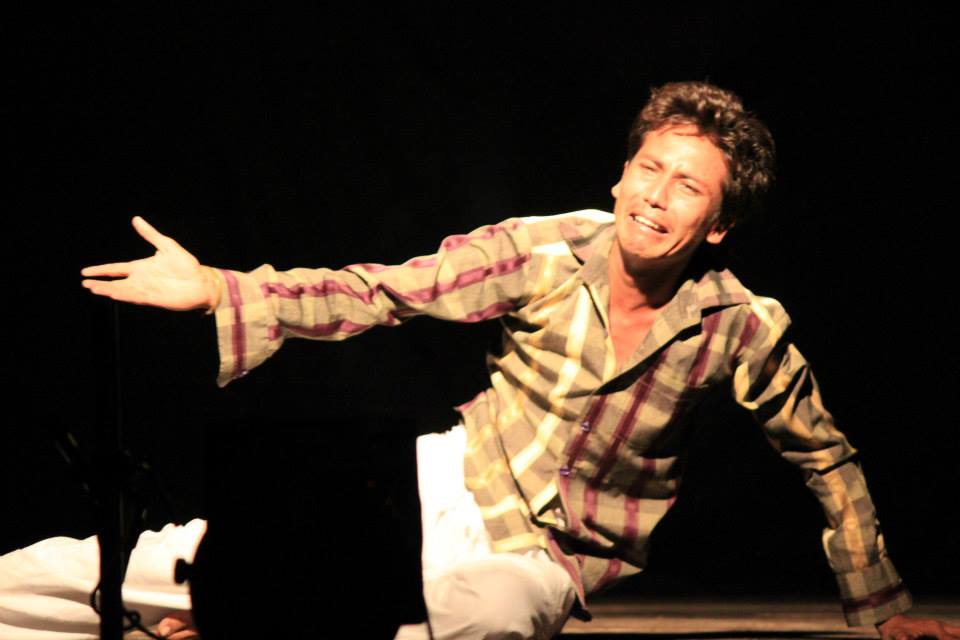
Atish Injrekar performing in ‘Pata’ (Tracks) at Gujarat Police Academy in Karai, Ahmedabad 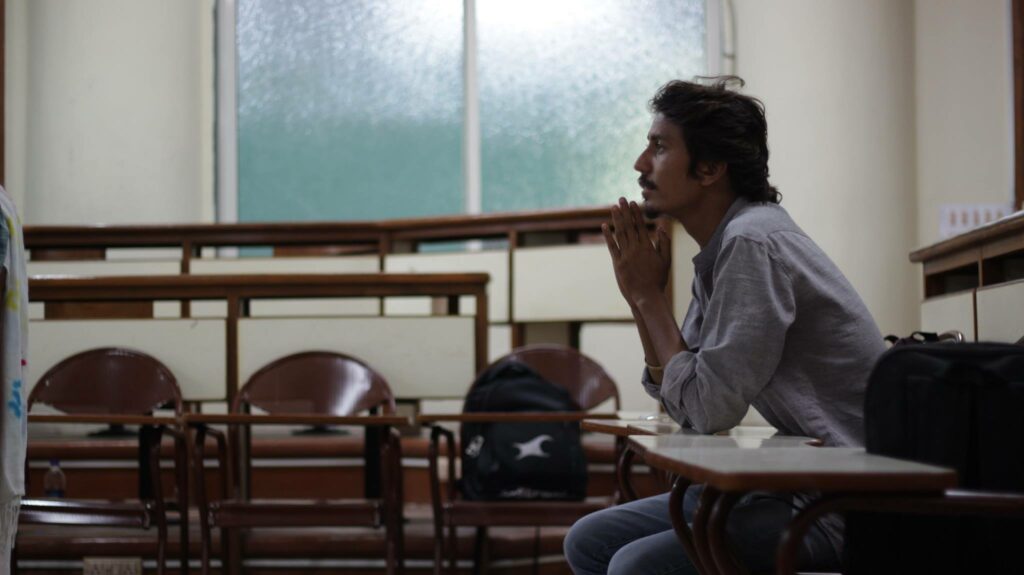
Atish Injrekar watching visually impaired students of Andhjan Mandal, Ahmedabad rehearse before a show Chharas – like most nomadic tribal populations – have always been well-versed in the arts: whether dances like the garba or traditions like mehndi, these were and are all regular parts of life for the community. Along with these arts, they also were masters of the art of thievery (chori ki kala) – says Dakxin mischievously. He gives me an example where the performative art of costume and presence met this other hidden art. Chhara women used to have special ghagras made with hooking apparatus on the inside, where they could attach things that they had stolen. This apparel changed how they walked – apparently even television sets could be hidden in the voluminous folds of such a ghagra! And it was foolproof: no matter how strong your suspicions, you wouldn’t ever ask a woman to lift her ghagra while searching her! In fact, Dakxin says, Chharanagar should actually have a living museum of DNTs where objects such as these should be archived.
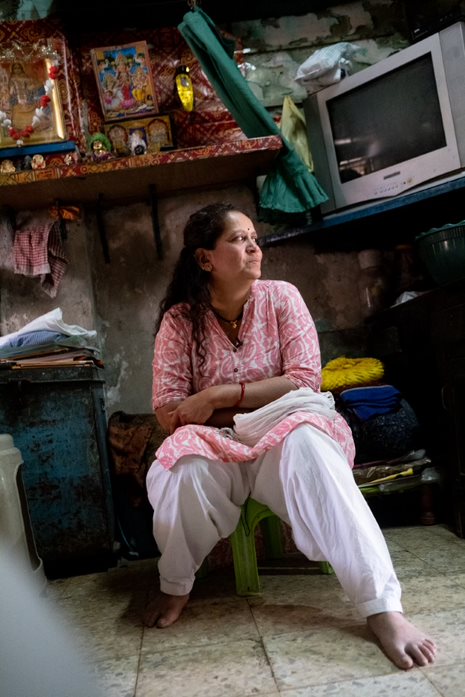
Chetna Rathore, an active member of Budhan Theatre, at home The Chharas are also extremely demonstrative and combative, with regular flare-ups between families and clans. Even these are extremely performative and dramatic, “with full use of angika and vachika abhinaya”. People used to actually wear turbans on the streets, since there was no telling what missile – bottles, sticks, stones – would be hurled from where towards who. And the exchange of the choicest abuses (galis) during Holi is a sort of singing tradition – a competition between cross-bred families and clans. However, while Dakxin has seen many fights and arguments, he has never heard of any legal action between adversaries. Everything is resolved within the community. This, again, harks back to their tribal origins – to express everything, to enjoy themselves, to be their own masters.
Arts is in the genes of the Chharas. So theatre became a natural choice to provide voice to DNT and related issues that Chharas face on an everyday basis.
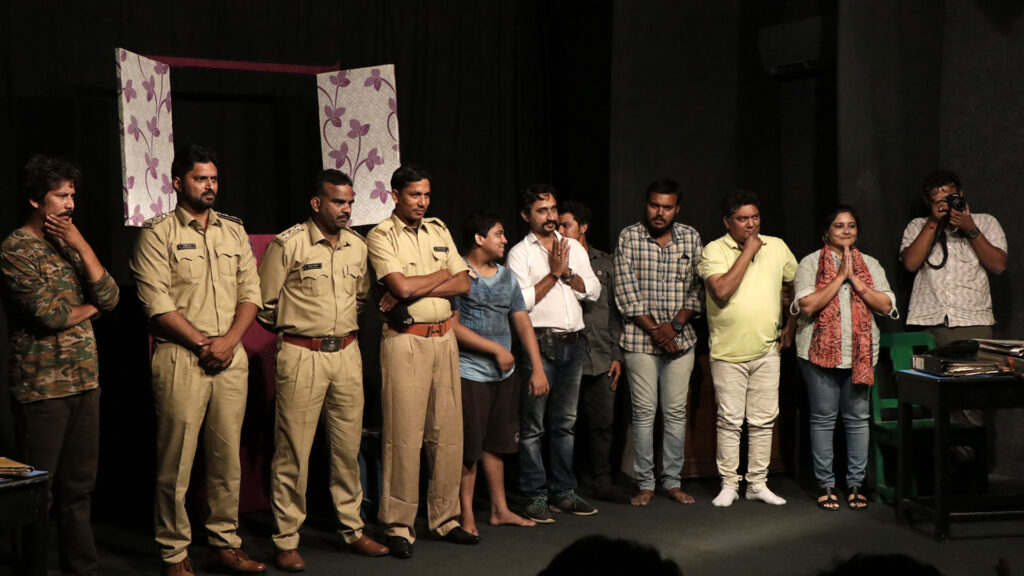
Members of Budhan Theatre after a performance at Serendipity Festival, Goa The challenge lay elsewhere. Till the 1990s Chharanagar was like a neighbourhood stuck in the dark ages – people only came here to steal or get drunk. Chharanagar has always been a battleground – not in terms of violence, but stigma. But this is also a neighbourhood that has made millionaires of others. How is it possible, Dakxin asks, that the State cannot stop the liquor dens with all the power at their disposal, and with the added convenience of the prejudice against Chharas? The only logical explanation is that they are profiting from it. As Dakxin does not mince his words: “Chharas cook the khichdi. It is eaten by the State, and we eat the burnt leftovers.” His brother, for example, now lives in the USA, and is quite successful. But he has been unable to buy land outside Chharanagar in Gujarat, as you are still required to mention your caste in any such transactions.
Converting such a deeply stigmatised space into one of creativity was a big challenge. But there was ready support and participation from the community who immediately saw their reflection in the work Budhan was and is doing. And support and participation comes in all kinds of ways – from personal involvement to providing spaces for performances to happen across the neighbourhood. Dakxin is very clear that the community is Budhan’s first audience towards building a sense of agency, ownership and advocacy among the Chharas. That has happened – as well as national acclaim – and now other DNT communities look to Budhan with hope.
Budhan’s not-so-hidden agenda has always been to inspire and create leaders from and of the community, leaders who can contribute to their societies politically and artistically. There are 40 DNT communities in Gujarat, and the plan is to develop 400 leaders from them. Budhan is currently working with 40 of them – and they will return to their communities and pass on the training. This will help amplify and deepen the voice of these communities, and bring them further into the public realm. They are not really concerned with the right-wing response to their work. Dakxin is almost nonchalantly categorical: “Their job is to close spaces for the arts and community, ours is to open them.”
Budhan’s not-so-hidden agenda has always been to inspire and create leaders from and of the community, leaders who can contribute to their societies politically and artistically. There are 40 DNT communities in Gujarat, and the plan is to develop 400 leaders from them. Budhan is currently working with 40 of them – and they will return to their communities and pass on the training. This will help amplify and deepen the voice of these communities, and bring them further into the public realm.
He is also actually clear that, in order to fight the forces of fascism, one must learn the tools of strong organisation and discipline from them. They use this to destroy the country, and we must use the same to build the country. He is part of several organisations that are part of this building and advocating. The DNT Action Group that has managed to suspend quite a few police officers in Maharashtra, the National Alliance Group which is an informal body of individuals and organisations working in this sector, and the DNT Adhikar Manch, of which he is national convenor. The society that Mahasweta Devi had set up in Purulia for the betterment of the DNT population there has also been revived by Budhan – after all DNT rights work started there.
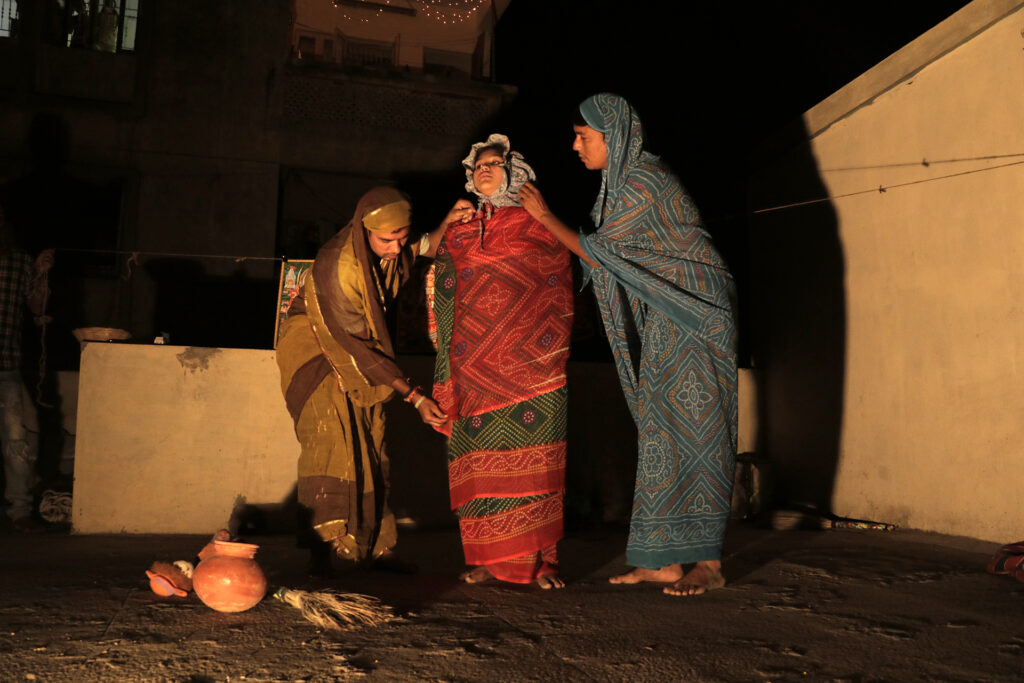
Members of Budhan Theatre rehearse on the terrace of the community library building 
A performance at Scrapyard Theatre, Ahmedabad In 2006, around the time when the DNT Commission was being set up, Mahasweta Devi had said that the Chharas will one day lead the DNT movement. That day seems to have arrived! Mahasweta Devi passed away in July 2016. The last time Dakxin met her in Chharanagar, he asked her as she was leaving – what should we do now? She said – “Mela karo.” That mela, that celebration of multiple voices coming together, continues.
The Mahasweta Devi memorial at the Adivasi Akademi in Tejgadh, Gujarat carries a simple but profound statement: Har sapne ko jeene ka adhikar hai (every dream has a right to live). That dream is being renewed and reborn every day through the work Budhan does.
Photographs courtesy Budhan Theatre
পূর্ববর্তী লেখা পরবর্তী লেখা
Rate us on Google Rate us on FaceBook
